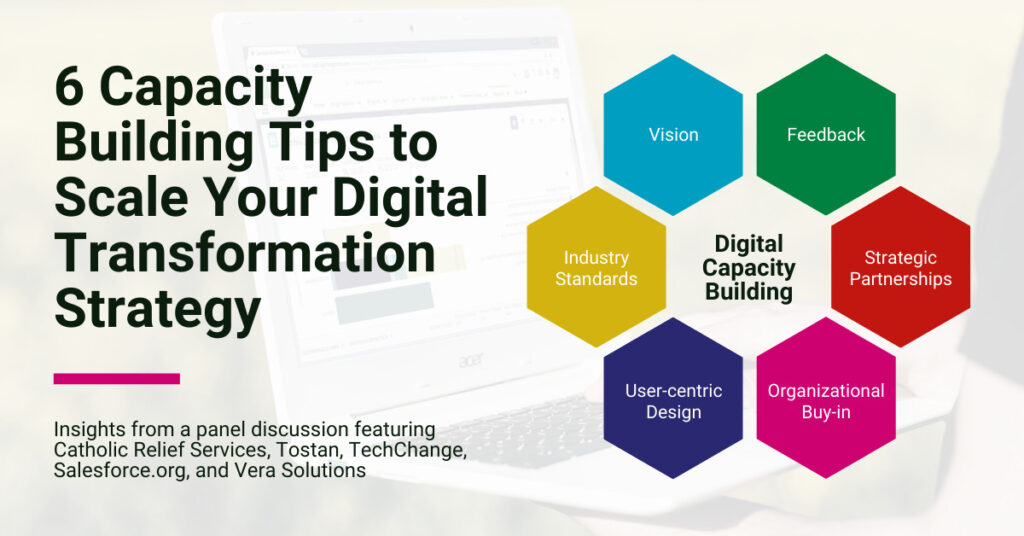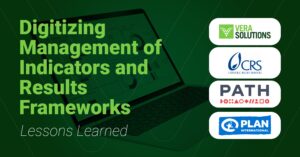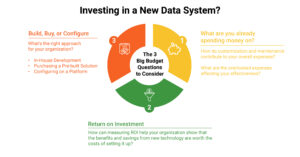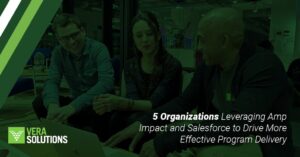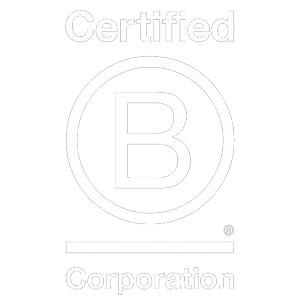The webinar draws on learnings from Tostan and CRS’s digital transformation journeys – working with Vera Solutions to leverage Salesforce and Amp Impact for internal accountability as well as transparency with their donors and the people they serve – with valuable sector-wide insights from TechChange, one of the world’s leading online training platforms for social change. In addition learning from the successes of high-performing nonprofit digital teams – including how to prioritize program data, learning, and collaboration in decision-making – the webinar highlights practical insights and advice for project planning, change management, and user adoption when rolling out a global technology platform. Here are six key takeaways from the discussion:
1. Define your vision for digital transformation
Before embarking on a digital transformation journey – whether you’re implementing a new technology, like Tostan, or rebuilding a legacy system, like CRS – it’s important to first create a vision for digital transformation. Not only will this help your organization focus on what’s really important, it will also help get everyone within the organization on board and on the same page.
“One of the things that I’m a big advocate for is painting the vision – painting the art of what’s possible. Ask teams, ‘If you were to have this information, would that make your job easier?’ You need to continually show people in the field how the system is set up to provide value for them and help their everyday work.”
Tim Fives, Senior Manager of Business Services, Catholic Relief Services
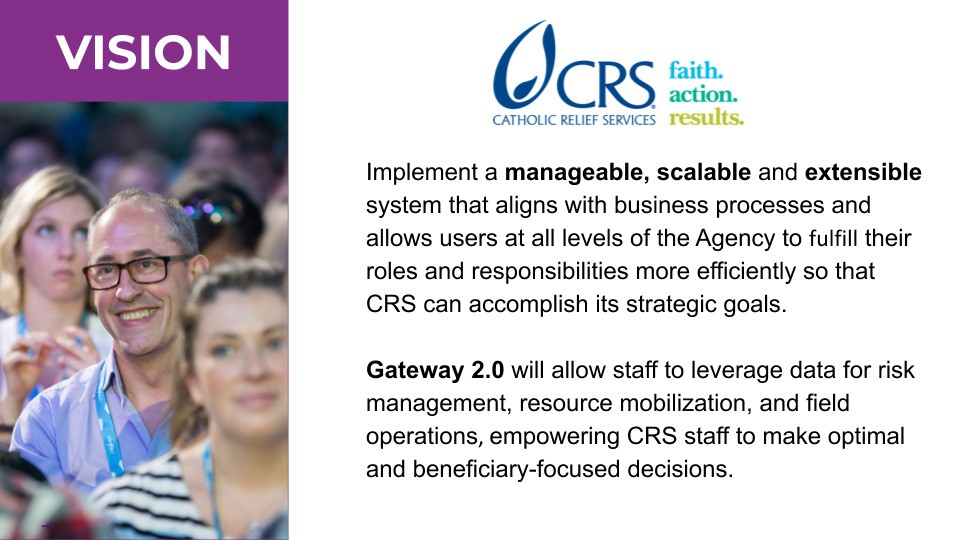
2. Build feedback into programmatic decision-making
“Tostan was born to listen and give voice to feedback. Learning from data is our DNA and strong feedback loops have been key for improving our programs over the last 30 years. Technology helps supplement this DNA to enhance what we’re doing, improve the quality of the data we’re collecting, and scale programs in the communities we serve.”
Elena Bonometti, CEO, Tostan
A centralized data management platform is key for breaking down data silos and getting feedback into the hands of those who need it. Elena shares that one of the biggest benefits of an integrated tool like Amp Impact is being able to connect project management, financial data, and impact measurement on one platform so the different teams can inform and enhance one another: “For Tostan, a strong foundation for knowledge management was important for being able to scale and amplify our impact.”
3. Work with partners you can trust
For nonprofits, it’s also important that the “visionary partners” who help fund your work truly understand the importance of using data-driven decision-making. Elena discusses how working with the Bill and Melinda Gates Foundation pushed Tostan to create a M&E framework that would show how better quality data leads to better outcomes across health, education, environmental sustainability, economic empowerment, and governments. This framework is now built into Tostan’s digital M&E platform.
Nick adds that TechChange has been working closely with multilateral organizations, like the United Nations, and large technology companies, like Facebook and Salesforce, to provide training on how they can allocate resources toward nonprofits’ digital capacity building needs.
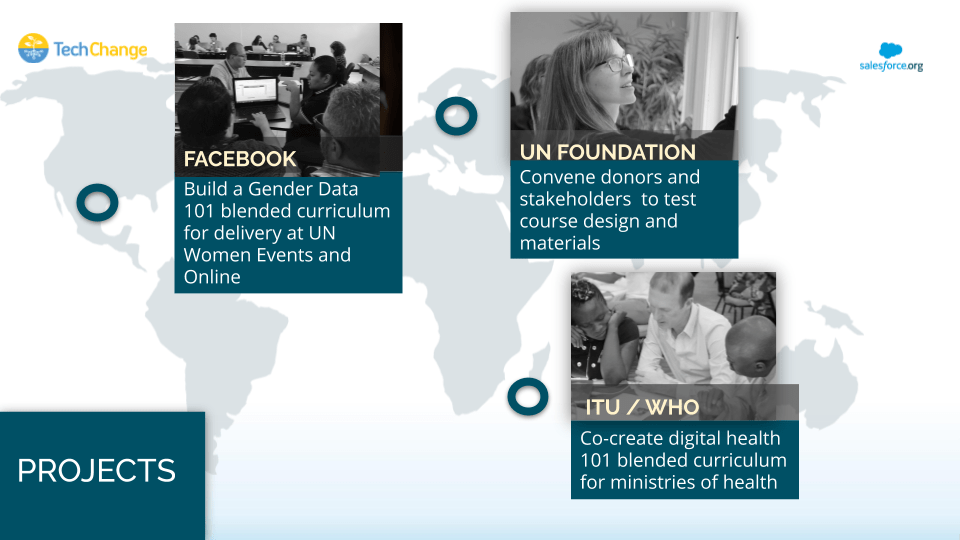
4. Name your technology platform to encourage buy-in
Tostan’s technology platform is called “Bountoung.” Elena explains it’s a word in the local Mandinka language that designates an attic where all the commodities are stored – representing a database.
“CRS’s [technology system] had always been called ‘Gateway’ overseas, but it never caught on in the US,” Tim shares. “As we started to think about naming conventions across the organization, the US side also picked up on the term ‘Gateway.’ That to me was a big win and a huge example of the organization coming together and convalescing around the platform, the name, the data, and the ability to tell stories about our work.”
CRS not only named their system, they also named the effort that went into rebuilding it. “We called it ‘Project Marvel’ after the superhero comic book because we knew it was going to be a heavy lift. We started to build some momentum behind that name and find some joy in this process,” says Tim.
5. Include end users from the beginning
For Tostan, it was really important to build trust from the beginning and make it clear that the feedback would be used to enhance the work of staff and help program implementers learn from each other.
For CRS, this meant conducting system design workshops and inviting users from across the organization – from donor services to advocacy teams to field practitioners – to join the design process and share their experiences.
“It’s not about the number of users or the amount of data; it’s about the value that you’re providing a set of users. Ask your users, ‘What information do you need to be able to do your job better?’ When you begin breaking down barriers, people start seeing the value in the data and that’s when they start to get excited.”
Tim Fives, Senior Manager of Business Services, Catholic Relief Services
“There’s an increasing need for data literacy and technology literacy among individuals and teams who understand the business – who understand the core of what your programs need and what your staff in the field need. What we’ve seen is the importance of designing solutions with end users, being able to understand their needs, and feed that information into the solution. Digital units, who are maybe a little more nimble than traditional IT departments, are a great way to drive innovation.”
Zak Kaufman, CEO and Co-founder, Vera Solutions
6. Adopt the Principles for Digital Development
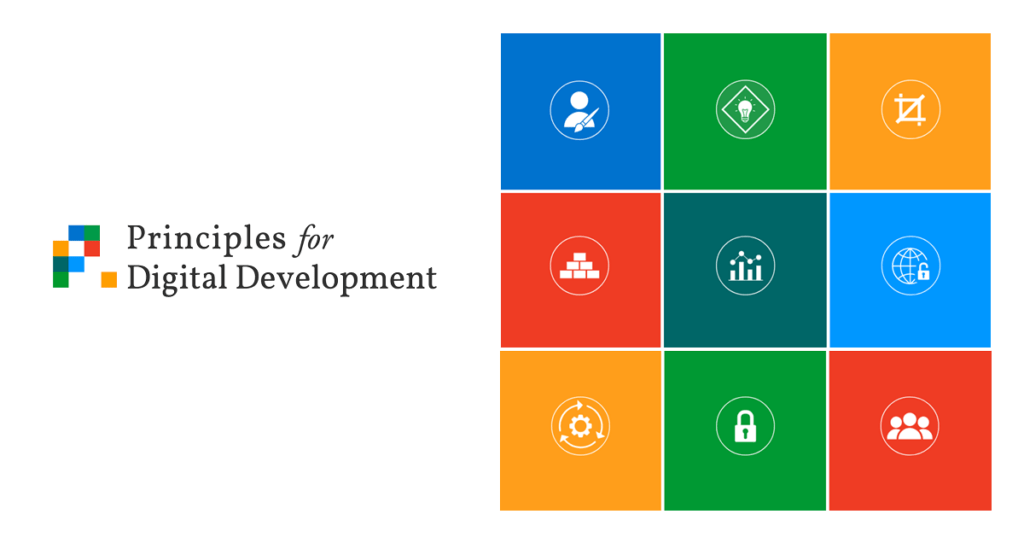
Nick highlights that TechChange is also using the Digital Principles to train donors:
“The initial instinct was, ‘Digital transformation needs to start at the level of the implementing organization. Let’s get a bunch of organizations in a room and we’ll work with the program managers and digitally transform and upscale them.’ That’s important, but what we realized is we also have to go as far upstream as possible. That’s why a lot of our training and capacity building work over the past couple of years has focused on training large donors who fund a lot of work in development.”
Nick Martin, CEO, TechChange
About the Participating Organizations:
Tostan has been empowering communities in Africa for nearly three decades as a fundamental, dynamic driver for enhancing human development across 12 of the 17 Sustainable Development Goals (SDGs). Tostan’s work is guided by a monitoring and evaluation framework, developed in partnership with the Bill and Melinda Gates Foundation, that has fundamentally changed how the organization thinks about scale, impact, and partnerships for the SDGs.
Catholic Relief Services works with organizations in over 100 countries to help poor and vulnerable people overcome emergencies, earn a living through agriculture, and access affordable health care. As a leader in the ICT4D space, CRS has continuously taken a technology-first mindset to help improve decision making and accountability.
TechChange is one of the largest providers of online education for the nonprofit and social sectors, helping hundreds of organizations deliver training on everything from malaria, to human trafficking, to climate change, and more. By partnering with organizations and individuals to put a creative, blended spin on the teaching approaches to meet the learning goals of the digital age.

